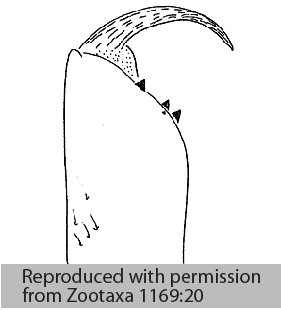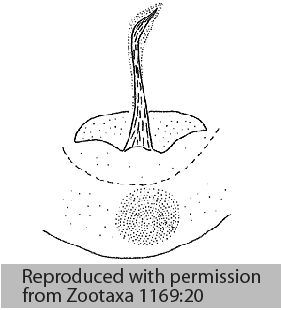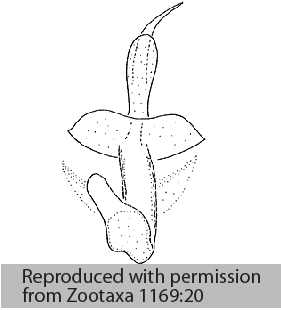Harpactea cressa Brignoli, 1984
Description
Male
Embolus transverse, thick, bent proximally. Conductor bifurcated with a large lamella-like plate and a very slender, sharp projection. Prosoma reddish brown. Prosoma 1.8 mm long. Sternum yellow. Eyes: anteriors less than one diameter apart. Legs: Femur I-II reddish brown, all other segments and legs III-IV yellow, femur I with 2 or 3 spines, femur II with 2 spines, femur III with 3 to 5 spines, femur IV with 4 to 7 spines. Abdomen yellowish.
Body length male: 3.4 mmFemale
Vulva with long and slender spermathecae, posterior diverticulum bent upwards. Prosoma 1.2-1.6 mm long.
Additional information
In litter under Quercus coccifera, pine forests, close to the sea. Altitude up to 1450 m.
Distribution
Phenology
| Jan | Feb | Mar | Apr | May | Jun | Jul | Aug | Sep | Oct | Nov | Dec |
 |  |
Figures
Distribution List
"No references" does not mean that the species does not occur in this country, but that we have not yet inserted the reference for it. We are working on it.
References
Brignoli P M (1984b) Ragni di Grecia XII. Nuovi dati su varie famiglie (Araneae). Revue Suisse de Zoologie 91: 281-321 ![]()
Chatzaki M, Arnedo M A (2006) Taxonomic revision of the epigean representatives of the spider subfamily Harpacteinae (Araneae: Dysderidae) on the island of Crete. Zootaxa 1169: 1-32 ![]()
Le Peru B (2011) The spiders of Europe, a synthesis of data: Volume 1 Atypidae to Theridiidae. Mémoires de la Société Linnéenne de Lyon 2: 1-522 ![]()
WSC (2025) World Spider Catalog. Version 26. Natural History Museum Bern, online at http://wsc.nmbe.ch (28.2.2025) doi: 10.24436/2 ![]()
Updates
| 30-04-2013 | Image insert |





